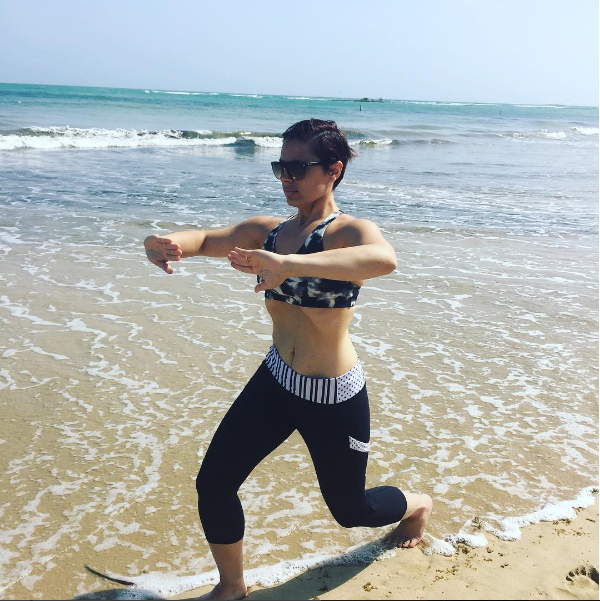Hypopressive techniques are postural and breathing exercises that achieve a reduction of pressure in the thoracic, abdominal, and pelvic cavities. The reduction of pressure allows the abdominals to activate efficiently and synergistically with the diaphragm thus containing and lifting the pelvic organs effectively into place.
Who benefits from hypopressives?
- Men/women with a pelvic organ prolapse including bladder, uterus, prostate, cervical, or rectal
- Men/women with incontinence, especially stress incontinence
- Pregnant women
- Post-Partum women
- Women looking to become pregnant
- Women with diastasis recti
- Men/Women looking to improve athletic performance
- Asthmatics
- Men/women with breathing dysfunction due to tightness of the diaphragm
- Men/Women looking to lose inches in their waist
- Women who are having sex with pain post part
How do hypopressive exercises work?
- Hypopressive exercises work by placing the body in specific postures in order to activate specific muscles such as the serratus anterior and transverse abdominus.
- Through breathing techniques and apneas the diaphragm works synergistically with the transverse abdominus in order to decrease the pressure in the abdominal/pelvic cavity, pull the organs back, and pull the pelvic floor up back into position.
- Through correct technique there will be lengthening of the spine which will improve a persons posture.
- The transverse abdominus will become a tonically firing muscle in order to support skeletal alignment and hold the organs in their appropriate positions.
What is the difference between standard exercise and hypopressives?
- Standard Abdominal Exercise:
- Uses phasic contractions
- The diaphragm pushes down
- There is increased abdominal pressure
- There is pelvic floor and visceral compression
- There is vascular compression
- Hypopressive Exercises:
- Utilize tonic contraction
- There is lengthening in the diaphragm
- There is decreased abdominal pressure
- There is no pressure on the pelvic floor
- There is increased vascular flow
What are the benefits of hypopressives?
- Reduce the effects of organ prolapse
- More efficient respiration
- Better posture
- Reduction of waist line
- Improve metabolism
- Banish stress incontinence
- Improve sex life
- Improve diastasis recti
- Prevention of hernia and reduction of pressure of current hernia
- Prevention of muscular injuries
- Improvement of self image
- Management of intra-abdominal pressure
What research is there to support hypopressives?
Galinda GA, Espinoza AS (2009). Exercise programs in mechanical low back pain. Mexican Journal of Physical Medicine and Rehabilitation. 21: 11-29.
Caufriez M., Fernandez-Dominguez, JC., Fanzel R., & Snoek T. (2006) Effects of a structured training program of hypopressive abdominal gymnastics on static cervical and thoracolumbar spine. Fisioterapia 28 (4), 205-16
Caufriez, M., Fernández-Domínguez, JC., Brynhildsvoll, N. (2011). Preliminary study on the action of hypopressive gymnastics in the treatment of idiopathic scoliosis. Enfermería clínica. 21(6). doi: 10.1016/ j.enfcli.2011.06.003
Thyl, S., Aude, P., Caufriez, M., Balestra, C. (2009). Incidence of diaphragmatic inhaling associated with expiratory apnea on the femoral venous circulation: study by Doppler ultrasound. Kinésithérapie scientifique, 502, 27-30
Soriano-Segarra, M.L., Corbí, B., & González-Millán, C. (2012). Subjective assessment of women after hypopressive training. I First National Conference of Sport Psychology UCAM: Murcia
Riera T., Rial T. (2013) "Does hyopressive exercise cause changes in respiratory parameters in training students of sports and physical activity" Pontevedra Spain
Negreira, R., Rial, T., Álvarez, M., García-Soidán, JL. (2014). Can a program of Hypopressive exercise influence hamstring extensibility and lumbar mobility of football players? Journal of physical training in soccer. 8(3), 42-52.
Martínez, I., Kindelán, B., León, N., López, B. Moreno, S., Nogueira, M., et al. (2012)Protocol for female urinary incontinence improvement in the Getafe's University Hospital's pelvic floor physiotherapy unit, evidence if its efficacy. Fisioterapia. doi: 10.1016/j.ft. 2012.02.004
Bernardes B, Resende A, Stüpp L, Oliveira E, Castro R, et al. (2012).Efficacy of pelvic floor muscle training and hypopressive exercises for treating pelvic organ prolapse in women: randomized controlled trial. Sao Paulo Med. J.,130 (1), 5-9.


